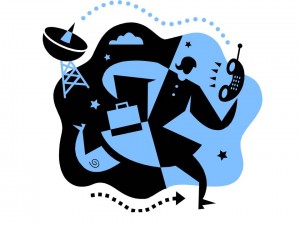 February is American Heart Month. The month also features Eating Disorders Awareness Week, Duchenne Muscular Dystrophy Awareness, and National Condom Week.
February is American Heart Month. The month also features Eating Disorders Awareness Week, Duchenne Muscular Dystrophy Awareness, and National Condom Week.
It also feels like mobile health month. I’ll be speaking three times this month at meetings featuring mobile health themes, in very different venues.
On February 8, the Health|Tech|Food event will be held at the Paley Center for Media in New York City as part of Social Media Week. I’ll set the stage at the meeting for mobile health, sharing my perspective on the role of social media and mobile health, and how together these can combine to address health challengers for New Yorkers. Some of my ideas involve leveraging mHealth and social media to:
- Bridge the gap of health disparities among foreign-born populations living in NYC
- Encourage safe sex in the city
- Keep kids with asthma out of the revolving hospital ER door
- Support caregivers of aging loved ones who live in other boroughs
- Help people carry-out healthy food
- Nudge kids with phones to self-ration sugar-filled drinks
- Remind people to get flu shots (to address low vaccination rates in NYC)
- Motivate New Yorkers to get fit
- Get tobacco free in N-Y-C
- Support pregnant New Yorkers to maximize the health of their babies
- Help New Yorkers deal with the blues (depression)
I’ll be covering the topic of Mobile Health: Hype and Hope at the upcoming meeting of unNiched(micro) at the CUNY Graduate Center in NYC, sponsored by Path of the Blue Eye, and Pixels and Pills. During that talk I’ll discuss the Holy Grail of connected health, and how mobile apps don’t get us nearly there for peoples’ optimal health outcomes. Still, the mobile platform offers some low-hanging fruit opportunities that can impact personal health — one app at a time, until we can connect personal health information from the many health data silos — in pharmacies, doctors’ paper files, health plan databases, and ERs-masquerading-as-primary-care-providers. But let there be no doubt we are smack dab in the middle of the Mobile Health Hype Cycle (per Gartner’s paradigm).
Finally, I’ll be discussing the social aspects of mobile health at the annual meeting of HIMSS on 22nd February at 4:15 pm. Past attendees of HIMSS know it’s DisneyWorld for health IT geeks (like me), especially when it’s held in Orlando. HIMSS this year features a track on social media and health IT, of which I’m very happy to be a part.
Health Populi’s Hot Points: My longtime collaborator, friend, and co-Founder of the Health 2.0 Conference, Matthew Holt, has a concept he calls “un-platforms.” Un-platforms are, as Matthew puts it, “the multitude of devices that people use to collect and receive information,” as well as channels used on the same device (THINK: voice, text, data, video and social networks on smartphones).
In health, the proliferation of un-platforms is mind-boggling — and that’s one of the challenges for connecting health. Solutions are being developed to address these obstacles — from cloud computing to developing uber-platforms that can be used for plugging the un-platforms into. Another solution will be the adoption of open-source electronic health records by practicing physicians, which when implemented for meaningful use, can have fully functioning patient portals that can support peoples’ personal health records.
Mobile platforms for health are un-platforms. They’re not an end: they’re a means toward connected health.




 I'm in amazing company here with other #digitalhealth innovators, thinkers and doers. Thank you to Cristian Cortez Fernandez and Zallud for this recognition; I'm grateful.
I'm in amazing company here with other #digitalhealth innovators, thinkers and doers. Thank you to Cristian Cortez Fernandez and Zallud for this recognition; I'm grateful. Jane was named as a member of the AHIP 2024 Advisory Board, joining some valued colleagues to prepare for the challenges and opportunities facing health plans, systems, and other industry stakeholders.
Jane was named as a member of the AHIP 2024 Advisory Board, joining some valued colleagues to prepare for the challenges and opportunities facing health plans, systems, and other industry stakeholders.  Join Jane at AHIP's annual meeting in Las Vegas: I'll be speaking, moderating a panel, and providing thought leadership on health consumers and bolstering equity, empowerment, and self-care.
Join Jane at AHIP's annual meeting in Las Vegas: I'll be speaking, moderating a panel, and providing thought leadership on health consumers and bolstering equity, empowerment, and self-care.